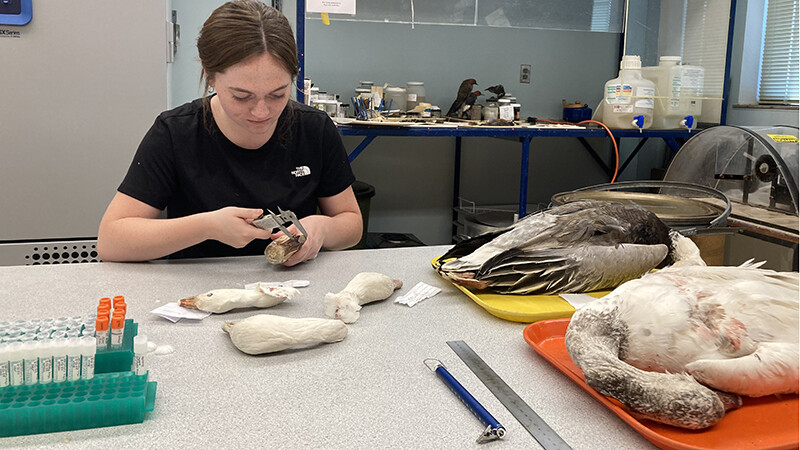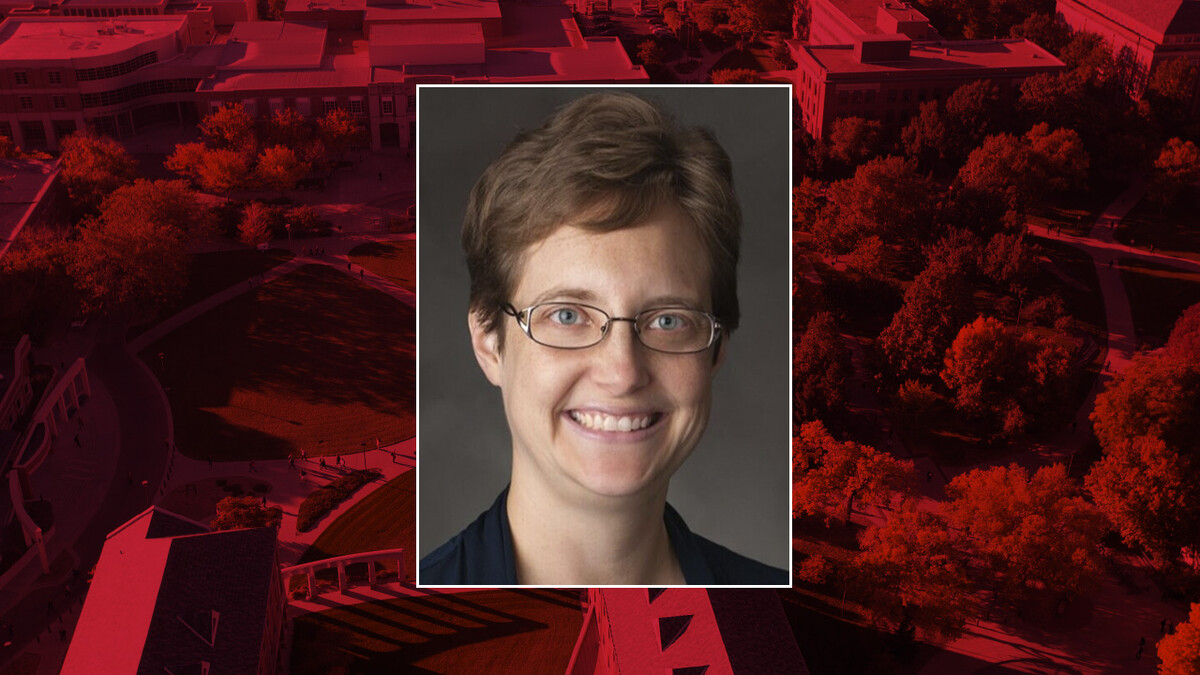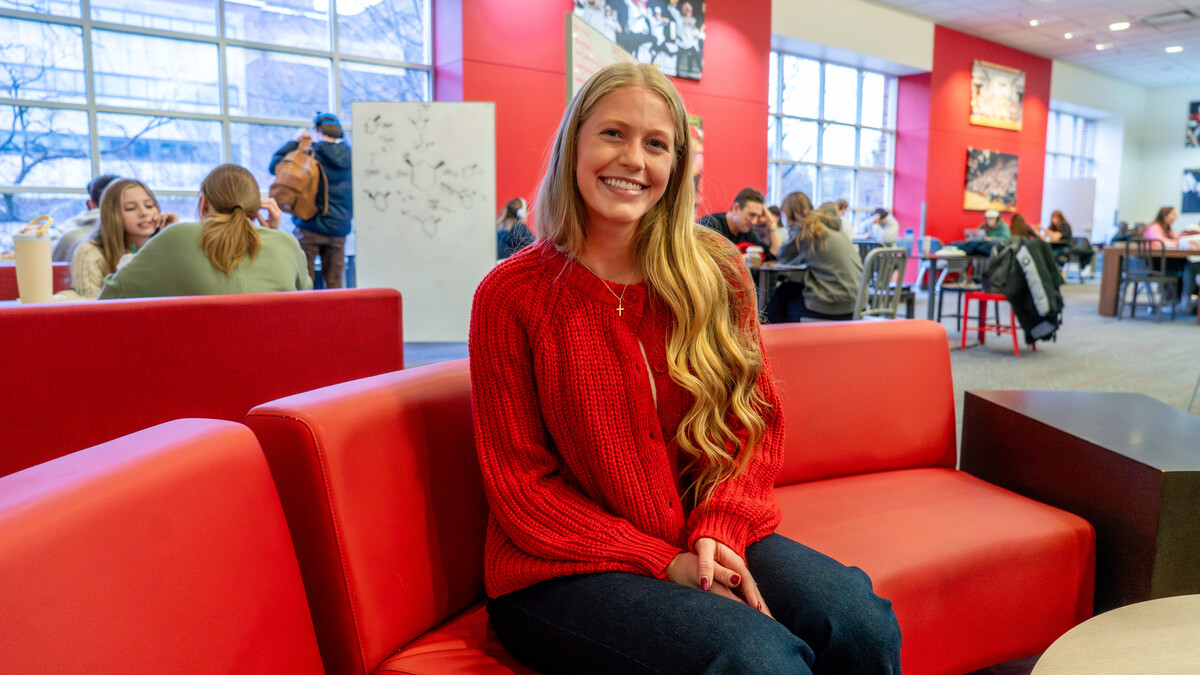
When it comes to snow geese and Ross’s geese, birds of a feather may not always flock together. Ava McQuillen, a junior in the School of Natural Resources, is studying a likely intermingling of the two species.
Both bird species have white feathers with black tips, but snow geese are generally larger, have longer necks, and have bills differing several ways from those of Ross’s geese. A key one is their grin patch, with the section where the bill meets being curved rather than straight like those of the Ross's geese.
At least that was the case historically. Since the 1970s, more geese with features of each species have joined the flock. Some Ross's geese now go through a “blue phase” that is rare for them but common for snow geese. In it, their heads are white but their bodies have dark plumage.
Since May, McQuillen has been looking into the loosey-goosey definitions of the species by taking measurements and DNA samples from historical specimens of both bird species. The fisheries and wildlife major from Bellevue has been using the collections of the University of Nebraska State Museum to measure features on about 100 heads of light geese, a term that includes both snow geese and Ross's geese. She has tail feathers collected by the U.S. Fish and Wildlife Service from hunters. She also has from various agencies more than 700 historical breast samples from both species to draw DNA from.
In the year-long Undergraduate Creative Activities and Research Experiences project, McQuillen has been working alongside Robert Wilson, a professor in the School of Natural Resources and a zoology curator at the state museum. Together, they are working on a project funded by the Arctic Goose Joint Venture to create a system of identifying traits for both Ross’s geese and snow geese so that management agencies can tell them apart.
The U.S. Fish and Wildlife Service collects duck wings and goose tail feathers from hunters every year to estimate the number of birds of different species and their age and sex in the year’s harvest. Seeing how different species are faring over time and in different locations helps management agencies know how to set hunting regulations to manage the populations. Some geese, though, like the Ross’s and snow, are hard to tell apart by their tail feathers.

Scientists in the past ran tests on light geese’s mitochondrial DNA, which comes solely from the mother's genetic line. Using just mtDNA, they failed to distinguish between the Ross’s geese and snow geese.
Management agencies having difficulty determining differences between the two species sometimes just lumped them together as light geese, but this action left them with inexact counts for either species, McQuillen said.
She and Wilson are now running genetic tests using nuclear DNA, which comes from both the mother and father.
"Historically, it was a small specific area of the genome that scientists were looking at, but we're just basically blowing that up," she said. "We're going to make it a lot larger so we can get a more comprehensive idea of what is happening genetically to actually differentiate between them."
Wilson said he and McQuillen are still early in the project, with limited results. They just finished sequencing their first 352 samples and are preparing the next set of 352 samples. He said they expect to run about 1,200 samples for the entire project.
"What we do know from an initial analysis of some of the genomic data is that we have the ability to differentiate the two species where more classical genetic approaches have failed,” Wilson said.
For McQuillen’s part of the project, he said they are also really interested in seeing whether a first-generation hybrid goose is more likely to mate with a Ross’s goose or a snow goose. This could tell them a lot about the mating behavior of each species and whether one species is more likely to father a hybrid goose or be mother to it.
Scientists know the species were separate until about World War II, when changes in agricultural practices led to more abundant grain in the central and Mississippi flyways, Wilson said.
Since the agricultural boom of the 1970s, snow geese populations have increased by millions, with fluctuations, McQuillen said. Some snow geese have moved into the same areas as Ross’s geese, which always had lower populations. In 1979, the first blue-phased Ross's goose was confirmed.
McQuillen said she hopes to be able to come up with concrete measurements, charts and graphs to give to management agencies to help them. She stated plans to go on for her master’s and doctoral degrees in a way that allows her to continue exploring her interests in conservation biology, museum work, fieldwork and, now, thanks to this project, genetics.
"This has really allowed me to dive into genetics and learn the impacts it can have on management, but also the impacts it can have on further understanding within a scientific community, because there are a lot of questions about the hybridization between the two species,” she said. “And it's fun to figure out genetically how they're similar and how they differ. It's a really enjoyable process."







